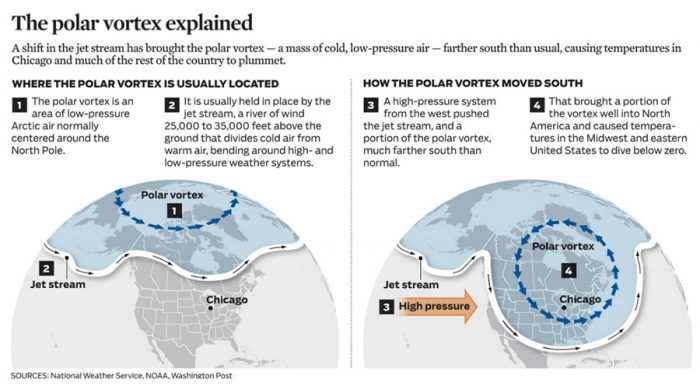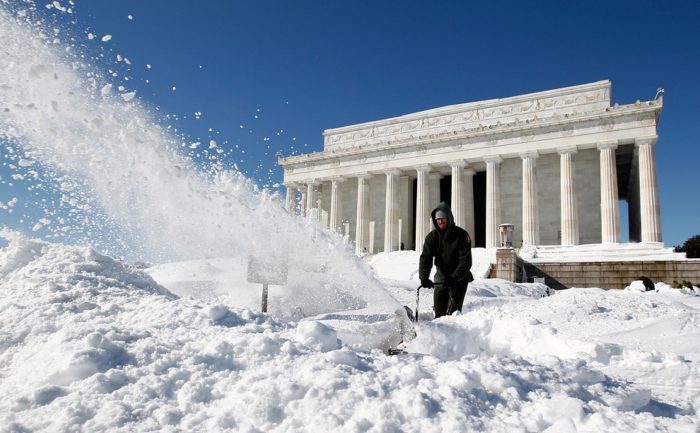If the climate is warming, why is it so darn cold?
Although temperatures are becoming more seasonal (for the moment), we won’t soon forget the polar temperatures and “bomb cyclone” that paralyzed the entire East Coast from Florida to Maine the first week of January. Tatyana Swift explains why global climate change creates extreme weather.
If global temperatures are rising, then why do we have increasingly harsh snow and ice storms? As surprising as it might seem, harsh winter weather is a side-effect of a warming climate. According to a July 2017 article by Kendra Pierre-Louis in Popular Science, climate researchers have determined that warming across the Arctic region is changing weather patterns across the Northern Hemisphere. These changing weather patterns shift cold air once trapped above the Arctic Circle making it more likely to reach the United States.
The biggest changes involve the Polar Vortex. This large low-pressure area contains cold air that circulates around the North Pole in a counter-clockwise direction. Normally this motion keeps the coldest air trapped in the Arctic region. But according to a recent study published in the Bulletin of the American Meteorological Society, rapidly melting sea ice is now releasing warmth into this low-pressure system. This warmer air can penetrate as far as eighteen miles into the stratosphere, disrupting the Polar Vortex’s counter-clockwise motion and allowing more cold air to escape. The result is warmer Arctic winters, and more extreme winter weather in other regions.
Unfortunately, extreme winter weather can also lead to changes in plant growth. Plants affected by the biological stress of unseasonably cold conditions or harsh winter weather tend to grow less–even when temperatures increase. Reduced plant growth means less photosynthesis to absorb carbon dioxide in the atmosphere. These subtle changes can compound climate change, increasing average global temperatures, warming the Arctic region, and further weakening the Polar Vortex. The result is more and more extreme winter weather.
These changes help differentiate between global climate and local conditions. The more human action affects the Earth’s climate as a whole, the more it disrupts the normal weather systems that plants, animals, and people depend on for survival. So that unseasonal blizzard or massive Nor’easter may be a sign of things to come. According to Scientific American, colder temperatures and increasing harsh winter storms are the “side effects of a climate in transition.”
Tatyana Swift irecently joined the Smithsonian Institution working on the SI-wide Sustainaibility Program. A strong advocate of sustainable practices and historical preservation, Tatyana is committed to life-cycle cost analysis and the in-depth study of materials.
Posted: 9 January 2018
- Categories:







Extremely interesting!